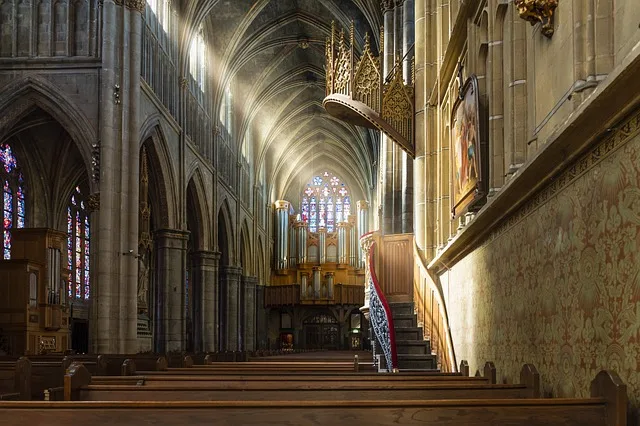First off, let’s talk about their origins. The Hagia Sophia, built in 537 AD, was originally a cathedral and a symbol of Byzantine architecture. Imagine walking into a space that feels like a heavenly realm, with its massive dome and intricate mosaics. It’s like stepping into a time machine that whisks you back to the days of emperors and empresses. On the flip side, the Sultanahmet Camii, completed in 1616, was constructed as a mosque. Its stunning blue tiles and six minarets create a sense of grandeur that’s hard to ignore. It’s like a beautiful painting that comes to life, inviting you to explore its serene interiors.
Now, let’s dive into their functions. The Hagia Sophia has transitioned through the ages, serving as a cathedral, mosque, and now a museum. It’s a melting pot of cultures and religions, showcasing the rich tapestry of Istanbul’s history. The Sultanahmet Camii, however, remains a functioning mosque, where the call to prayer echoes through the air, inviting worshippers to gather. It’s a place of peace and reflection, where the hustle and bustle of the city fades away.
In terms of architecture, both buildings are masterpieces, but they reflect different styles. The Hagia Sophia boasts a more Byzantine influence, with its grand dome and lavish decorations, while the Sultanahmet Camii showcases classic Ottoman design, with its elegant arches and intricate tile work. Each structure is like a chapter in a book, telling a story of its own while contributing to the overall narrative of Istanbul.
Hagia Sophia vs. Sultanahmet Mosque: A Tale of Two Architectural Marvels
The Hagia Sophia, originally built as a cathedral in 537 AD, is a breathtaking blend of Christian and Islamic influences. Imagine walking into a space where the light dances through massive domes, creating an ethereal glow that feels almost otherworldly. It’s like stepping into a time machine that whisks you through centuries of history, from Byzantine emperors to Ottoman sultans. The intricate mosaics and soaring arches whisper tales of devotion and grandeur, making it a must-see for anyone visiting Istanbul.

Now, let’s hop over to the Sultanahmet Mosque, also known as the Blue Mosque. This beauty, completed in 1616, is like a symphony of blue tiles and elegant minarets reaching for the sky. When you stand in its vast courtyard, you can almost hear the echoes of prayers that have filled its halls for centuries. The mosque’s design is a nod to the Hagia Sophia, yet it stands proudly on its own, showcasing the Islamic architectural style with its stunning calligraphy and serene ambiance.

So, which one captures your heart? Is it the historical depth of the Hagia Sophia or the serene beauty of the Sultanahmet Mosque? Each structure offers a unique glimpse into Istanbul’s soul, inviting you to explore the layers of history and artistry that define this vibrant city.
From Cathedral to Mosque: Unraveling the Transformative History of Hagia Sophia
Originally built in 537 AD as a cathedral for the Byzantine Empire, Hagia Sophia was a symbol of Christian faith and architectural ingenuity. Its massive dome seemed to float above the congregation, creating an ethereal atmosphere that left visitors in awe. Can you picture the vibrant mosaics depicting Christ and the Virgin Mary, glimmering in the sunlight? They were not just decorations; they were a testament to the spiritual significance of this grand structure.
Fast forward to 1453, when the Ottomans conquered Constantinople. The transformation of Hagia Sophia into a mosque marked a pivotal moment in history. Minarets were added, and the interior was adorned with Islamic calligraphy, blending two rich cultures into one breathtaking space. It’s like watching a beautiful painting evolve, each brushstroke adding depth and meaning.
Today, Hagia Sophia stands as a bridge between worlds. It’s a place where you can feel the weight of history, where the echoes of prayers from different faiths resonate. Whether you’re gazing at the intricate details of the dome or wandering through the vast halls, you can’t help but marvel at how this iconic structure has adapted and thrived through the ages. Isn’t it fascinating how a single building can encapsulate the essence of so many different eras and beliefs?
Sultanahmet Mosque: The Jewel of Istanbul in Contrast to Hagia Sophia’s Grandeur
As you step inside, the intricate blue tiles that adorn the walls catch your eye, reflecting light in a way that feels almost ethereal. It’s like stepping into a dream where every corner tells a story. The mosque’s stunning domes and towering minarets create a breathtaking contrast to the more austere, yet equally impressive, Hagia Sophia nearby. While Hagia Sophia boasts a rich history as a cathedral and later a mosque, the Sultanahmet Mosque embodies the spirit of Islamic architecture with its harmonious design and vibrant colors.
Have you ever felt the weight of history pressing down on you? That’s what you experience when you stand in the courtyard of the Sultanahmet Mosque, surrounded by its grand arches and serene gardens. It’s a place where time seems to stand still, inviting you to reflect and soak in the beauty around you. The call to prayer echoes through the air, a reminder of the living culture that thrives in this ancient city.
In contrast, Hagia Sophia, with its vast dome and rich mosaics, tells a different story—one of Byzantine glory and transformation. While both structures are iconic, the Sultanahmet Mosque offers a more intimate experience, drawing you in with its warmth and welcoming atmosphere. It’s like comparing a cozy, inviting home to a grand palace; both are beautiful, but each has its own unique charm.
Exploring the Distinctive Features of Hagia Sophia and Sultanahmet Mosque
Hagia Sophia, originally built as a cathedral in 537 AD, is a masterpiece of Byzantine architecture. Imagine walking into a space where the light dances through massive domes and intricate mosaics, creating an ethereal glow. It’s like stepping into a dream where history whispers secrets from centuries ago. The sheer size of the dome is awe-inspiring, making you feel small yet connected to something grander. And let’s not forget the rich layers of history—this place has been a church, a mosque, and now a museum, embodying the spirit of coexistence.
On the flip side, the Sultanahmet Mosque, often called the Blue Mosque, is a younger sibling, completed in 1616. Its six minarets reach for the sky, almost like fingers beckoning you to come closer. Step inside, and you’re greeted by a sea of blue tiles that shimmer like the ocean under the sun. The atmosphere is serene, inviting you to pause and reflect. The intricate calligraphy and the soft glow of the chandeliers create a sense of peace, making it a perfect spot for contemplation.
So, what’s the takeaway? While Hagia Sophia dazzles with its historical depth and architectural brilliance, the Sultanahmet Mosque enchants with its beauty and tranquility. Each has its own unique charm, making them must-visit landmarks that capture the essence of Istanbul’s rich cultural tapestry.
Cultural Crossroads: How Hagia Sophia and Sultanahmet Mosque Reflect Istanbul’s Diverse Heritage
Hagia Sophia, originally a cathedral, later transformed into a mosque, and now a museum, is a testament to the city’s layered history. Its massive dome and intricate mosaics whisper secrets of Byzantine glory, while the minarets added during the Ottoman era echo the call to prayer. It’s like a time capsule, capturing the essence of both Christianity and Islam, inviting you to ponder how faith shapes our world.
Then there’s the Sultanahmet Mosque, often called the Blue Mosque for its stunning blue tiles. This beauty is a younger sibling to Hagia Sophia, built in the early 17th century. Its grand arches and six minarets reach for the sky, showcasing the Ottoman Empire’s architectural prowess. Walking inside, you can’t help but feel a sense of peace wash over you, as if the walls themselves are embracing you in a warm hug.
Together, these two landmarks are more than just tourist attractions; they are symbols of coexistence. They remind us that despite our differences, there’s beauty in diversity. Just like a vibrant tapestry, each thread contributes to the overall picture, making Istanbul a true cultural crossroads where East meets West, and history dances with modernity.
Frequently Asked Questions
What is the Historical Significance of Hagia Sophia and Sultanahmet Mosque?
Both structures are iconic symbols of Istanbul, representing the city’s rich cultural and religious history. The former served as a cathedral and later a mosque, showcasing Byzantine and Ottoman architectural brilliance. The Sultanahmet Mosque, known for its stunning blue tiles, reflects the Islamic heritage of the region. Together, they illustrate the historical transition of power and faith in Turkey, making them vital to understanding the interplay of Christianity and Islam.
What Are the Major Differences in Religious Practices at Hagia Sophia and Sultanahmet Mosque?
The two sites reflect distinct religious practices: Hagia Sophia, originally a cathedral, showcases Byzantine Christian traditions, including iconography and liturgical ceremonies. In contrast, Sultanahmet Mosque, a functioning mosque, emphasizes Islamic practices such as daily prayers, the call to prayer, and the absence of images, focusing on the worship of Allah. Each site embodies the spiritual and cultural heritage of its respective faith.
How Do the Architectural Styles of Hagia Sophia and Sultanahmet Mosque Differ?
The architectural styles of these two iconic structures reflect different historical and cultural influences. Hagia Sophia, originally a cathedral, showcases Byzantine architecture with its massive dome, intricate mosaics, and use of light. In contrast, Sultanahmet Mosque, also known as the Blue Mosque, exemplifies Ottoman architecture, characterized by its large central dome, multiple semi-domes, and elegant minarets, along with extensive tile work. These differences highlight the evolution of architectural design from the Byzantine to the Ottoman period.
How Do Visitor Experiences Compare Between Hagia Sophia and Sultanahmet Mosque?
Visitors to both sites experience rich historical and architectural significance, but the atmosphere differs. Hagia Sophia, with its grand dome and mosaics, offers a blend of Christian and Islamic heritage, often drawing admiration for its artistic features. In contrast, Sultanahmet Mosque, known for its stunning blue tiles and six minarets, provides a serene environment for prayer and reflection. While both attract large crowds, Hagia Sophia tends to focus on its museum-like qualities, whereas Sultanahmet Mosque emphasizes its active role as a place of worship.
What Are the Key Functions of Hagia Sophia Compared to Sultanahmet Mosque?
Hagia Sophia and Sultanahmet Mosque serve distinct purposes and reflect different historical contexts. Hagia Sophia, originally a cathedral, later became a mosque and now functions as a museum, showcasing Byzantine and Ottoman architecture. It is renowned for its massive dome and mosaics. In contrast, Sultanahmet Mosque, also known as the Blue Mosque, is an active place of worship, famous for its six minarets and blue tiles. While both are significant religious sites, Hagia Sophia emphasizes historical and architectural heritage, whereas Sultanahmet Mosque focuses on contemporary Islamic practices.

